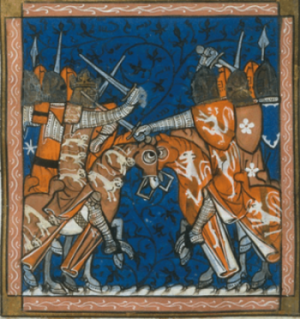The Rise of the Mortimers
Roger Mortimer of Wigmore (1232-1282) was the first of the Mortimers to feature prominently at the very centre of national politics and conflict. For most of his life he was a staunch and reliable supporter of the crown, initially supporting King Henry III and later his son Edward I.
Roger’s father Ralph (d1246) had the reputation of being a warlike and vigorous man and Roger was involved in military action from the age of 11. He was soon to be facing a resurgent Welsh military power led by the new Prince of Wales, Llywelyn ap Gruffydd. Over the succeeding years many of the Mortimer lands within Wales were to be recaptured by the Welsh.
At home there had been a growing rift between King Henry III and his barons for some years. The story is complex, and the opposition under the leadership of Simon de Montfort varied in size and effectiveness. Although initially a member of this reforming group, Roger Mortimer was firmly on the King’s side by 1259 and he remained loyal for the rest of his life. Henry III subsequently went on the offensive creating serious divisions within the baronial opposition and causing Simon de Montfort to retreat to France in 1261.

Simon de Montfort on the right
When the barons realised that Henry III had no intention of introducing the reforms they demanded, they invited Simon to return to England. In 1264 they won a famous victory at the Battle of Lewes capturing the king, his son Prince Edward (the future Edward I) and Roger Mortimer. The Marcher lords, including Roger, were released in order that they could deal with the increased hostility from the Welsh, but Prince Edward remained in custody. The following year, however, Roger rescued Edward from imprisonment in Hereford and took him to Wigmore and then on to Ludlow.
The barons soon became disaffected with Simon de Montfort’s rule and many joined Prince Edward and Roger Mortimer in a new armed campaign against him. Roger raised a force at Wigmore and joined the Prince’s army at Ludlow. The dramatic involvement of Roger in the Battle of Evesham (1265) ranks as one of the defining moments in Mortimer history. Though leading one of the wings of Prince Edward’s army, new documentary evidence indicates that he was in charge of a hit squad, and personally killed Simon de Montfort. He sent the severed head to his home in Wigmore as a grizzly present for his wife.
After the death of Henry III in 1272, his successor Edward I relied heavily on Roger as a leading force in his campaign to subdue the Welsh. There is some evidence that the Mortimer family were involved in Llywelyn ap Gruffydd’s death in 1282 near Builth, the year that Roger also died.
Edward’s indebtedness to Roger is not just seen in the lands and privileges that accrued to him, but in the fact that he allowed Roger to hold a tournament at Kenilworth Castle, where a tower is named after him. In writing to the family after Roger’s death, the king ‘mourns the more his valour and fidelity; and his long and praiseworthy services to the late king and to him.’ No wonder that the Mortimer family now appears to be in the first rank of English barons, and that it comes more significantly on to the national stage.